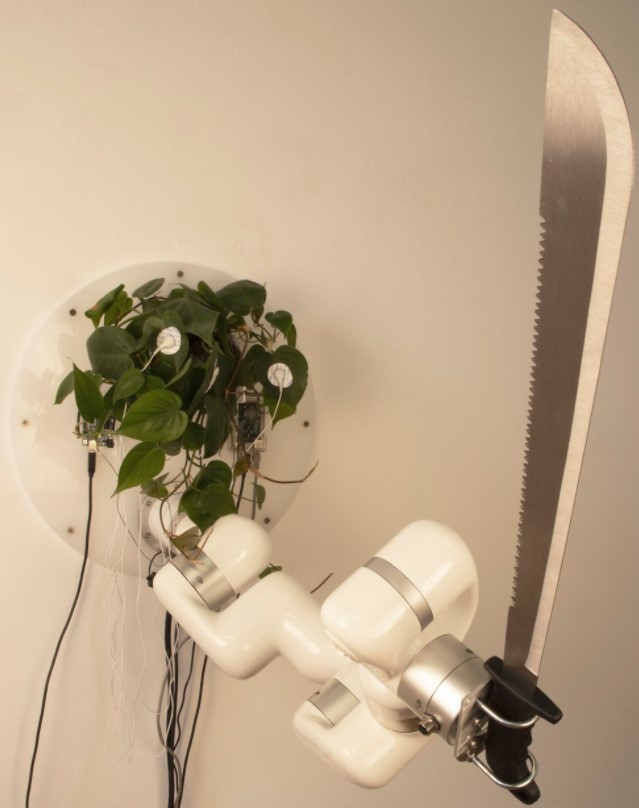An inventor has designed a weapon-wielding plant that looks like it's controlling a robotic arm holding a machete.
David Bowen, the artist behind this creation, attached the mechanical arm to the wall to free up some space for the machete. He says that the real-time signals dictate the movement of the robot which swings the machete.
How Plant Machete Operates

DesignBoom was the first to report that Bowen has created a special control system where the plant serves as the controller of the robot.
In particular, the inventor made use of a system that is capable of reading the electrical impulses coming from the plant machete robot. Somehow, he utilized a microcontroller that he attached to the plant. The signals are interpreted through the leaves.
Through software, Bowen established a real-time mapping for the movements of the robot which turns out to be wielding a machete. At this point, the creator will now have an idea about the input that's coming from the plant.
In short, Bower aims to make the plant the official brain of the robot. This invention is a breakthrough in the field of robotics because a mere connection could foster a newfound discovery on a whole new level.
Although it's entirely an impressive invention, this integration is not new anymore to such expertise. Several scientists and engineers have previously created robots that mimic human movements.
Related Article: This Seed-Planting Robot Looks Like WALL-E, But What it Could Actually Do?
The Rise of AI-Trained Robots
According to a report by Interesting Engineering, a group of researchers has found a way to invent a machine capable of imitating human gestures. Four years ago, MIT scientists managed to come up with the idea of creating a robot trained to perceive brain signals.
In Japan, the field of robotics has a lot of promising products to bring in.
Back in 2020, the engineers developed a device similar to a headband. This item acts as a receptor for brain signals. The robot could perform a task once the activity data is sent via a special app. Of course, the machine needs to wear this to make it functional.
Robots could go a long way even in the field of health. For instance, Moses Kiuna and David Gathu from Kenya have created a machine that can help people with disabilities.
Meanwhile, a previous report from Tech Times suggests that human brains are wired to adapt using an extra "third thumb." The researchers said that people can easily think that an additional body part can function like a real one.
This means that without thinking, we can immediately adapt to the augmented device in our body. As such, we can fully gain access to it and control it like it's a living thumb.
Read Also: Robotic Arms With Brain-Machine Interface Can Help People With Arm Paralysis
This article is owned by Tech Times
Written by Joseph Henry
![Apple Watch Series 10 [GPS 42mm]](https://d.techtimes.com/en/full/453899/apple-watch-series-10-gps-42mm.jpg?w=184&h=103&f=9fb3c2ea2db928c663d1d2eadbcb3e52)



